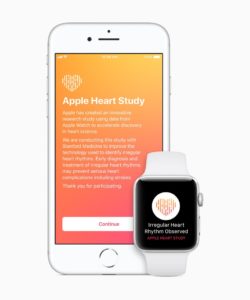Like many of us, I have several family members who experience atrial fibrillation (AFib) regularly, as between 2-6 million people in the United States have this disorder. My father-in-law in particular has experienced difficultly with AFib recently and because he knows I study the heart, he often asks me about different treatment options and advice for handling his disease. Of course since I’m a basic research scientist, I always remind him that I’m not that kind of doctor and gently recommend he talk about it with his medical doctor and receive second opinions. However, when I got the chance to attend the AHA’s Scientific Sessions 2018 for the first time as an AHA Early Career Blogger, I knew I wanted to attend some sessions about AFib so I might have a little more to say for the next time I see my family. As a basic researcher, I don’t often get the often opportunity to hear from physicians about the day-to-day AFib issues they encounter with their patients.
Naturally, I jumped at the chance to attend the “Hey Doc, My Wristband Says I Have AF What Do I Do?” session yesterday afternoon. I was initially drawn to this particular event because my husband and I actually bought my father-in-law a wearable device last year for Christmas when he expressed interest in counting his steps and also keeping an eye on his heart rate, based on a comment from his doctor. Surprisingly though, the gift backfired since my father-in-law’s anxiety about his heart rate skyrocketed after he started wearing the device, because anytime it gave him an “abnormal” heart rate alert, he would get nervous and eventually ended up just staring at the device all day. So we all agreed it would be best if he just stopped wearing it. During this time, I kept wondering how accurate these devices actually are, and if my father-in-law actually was experiencing AFib that regularly, or maybe these were just false positives? Luckily, medical researchers primed to study this question were already on it, because the Apple Heart Study was initiated last November.
This collaboration between Apple and Stanford, spearheaded by Dr. Marco Perez, is a progressive clinical trial that uses data from Apple Watch devices from over 400,000 participants. The main purpose of this unprecedented study is to examine if AFib can be reliably diagnosed from irregular pulse notification data from wearable devices. In this session, Dr. Perez outlined how easy it is for participants for to sign up for the study and how a single reminder email from Apple actually doubled the amount of study participants almost over night, highlighting the power of these types of collaborations. One of the most interesting aspects of this study is how it is all done remotely. Interested participants just have to download the application, where they consent to study and then the algorithm monitors them. If an individual receives an irregular heart rate alert, they are recommended to a local doctor who can then prescribe them a patch monitor, which is mailed to the participants. After the monitor period, the participants simply mail the patch monitor back to Stanford where the scientists analyze the data. If AFib or other cardiac disorders are identified from this data, the participants are then referred to a doctor to get treatment. The clinical trial scientists never even meet the participants.

Dr. Perez mentioned that they are hopeful to have all of the data analyzed by the end of January as they are still collecting data everyday. Some of the most pressing questions this study hopes to answer is how accurate are these irregular heart rate alerts in diagnosing AFib? False positive rates are particularly of interest since many in the community think these devices could be causing alert when none is needed. Also an important thing to consider is how does the user’s behavior change after the alert? I know my father-in-law’s anxiety increased after getting these alerts, but I’m sure some people might find these devices as a comfort, particularly if this study reveals them to be accurate. Since many physicians here at the AHA 2018 Sessions have expressed that their patients are coming into their office with irregular alert data from their wearable devices, I’m sure doctors and users alike are excitedly awaiting the results of this powerful study – I know I am. The most important take home from this study truly has to be the actual size and manner in which it has been conducted. The results of this study have the potential to impact the future of clinical trials in general, since a trial of this magnitude run completely virtually has never been done before.
Picture source: https://www.apple.com/newsroom/2017/11/apple-heart-study-launches-to-identify-irregular-heart-rhythms/